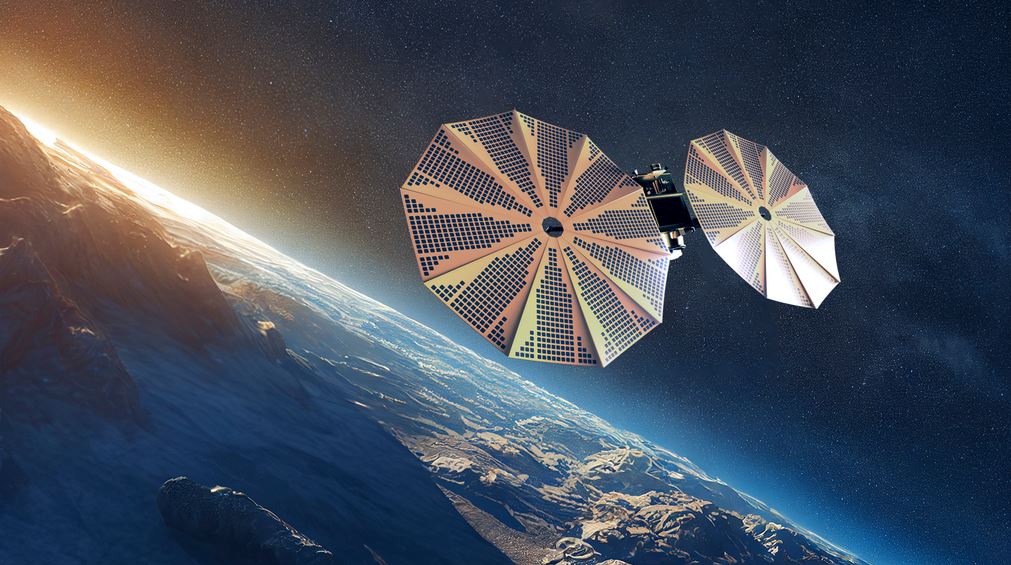The United Arab Emirates announced on Monday an ambitious follow-up mission: a grand tour of the asteroid belt, building on the success of its Hope spacecraft, which is now orbiting and studying Mars.
Launch of the MBR Explorer spacecraft is planned for 2028. The spacecraft was named after Sheikh Mohammed bin Rashid al-Maktoum, the ruler of Dubai and the prime minister of the United Arab Emirates. The spacecraft is scheduled to arrive at the 1.4-mile-wide asteroid Westerwald in February 2030, and will then go on to six more objects in the asteroid belt between Mars and Jupiter.
Most fascinating is the seventh discovered asteroid, named Justitia. Justitia, which has a diameter of around 30 miles, has an unusually crimson colour for an asteroid. It more closely resembles the tiny ice planets that circle the sun beyond Neptune’s orbit in the Kuiper belt.
Because of this, astronomers believe Justitia originated far out in the solar system and was dragged in by the larger planets’ varying orbits, where it ultimately became part of the asteroid belt.
In October 2034, the MBR Explorer will get within a few hundred feet of Justitia to examine it for at least seven months using cameras and spectrometers that can determine the asteroid’s composition, including the existence of water. The carbon-based molecules, which constitute the foundation of all life, are thought to be the source of the reddish hue. A tiny lander will also be released from the spaceship to settle on Justitia’s surface.
The MBR Explorer will weigh over two tonnes, making it far heavier than the Emirates’ Hope spacecraft, which made a trip to Mars. during the first six asteroids, the spacecraft will be travelling at high speeds during its flybys, requiring accurate navigation to keep the instruments pointing in the right direction.
Additionally, all of the planned flybys can only be accomplished if the spacecraft launches during a three-week window in March of 2028. If it can’t launch at that time, the whole mission will need to be rethought, perhaps with new targets among the asteroids.
The United Arab Emirates is a novice to space travel despite being an oil-rich nation somewhat smaller in size than the state of Maine. Its first space programme didn’t launch for another two decades.
As part of a larger effort to kickstart a high-tech economy in the nation in anticipation of a future when petroleum flows less abundantly, it is becoming more active in space today. One of its astronauts, Sultan al-Neyadi, is presently stationed in space at the International Space Station as part of this effort.
The first Emirati satellite, named DubaiSat-1, was launched in 2009. Although the satellite itself was built in South Korea, Emirati engineers served as interns there. KhalifaSat, a satellite designed to observe Earth, was constructed by the Mohammed bin Rashid Space facility in Dubai in 2018, nine years after the facility first opened.
The Emirates once again brought in international assistance from the Laboratory for Atmospheric and Space Physics at the University of Colorado Boulder for the Mars mission, its first journey deeper into the solar system.
Hope lifted off in July of 2020 and made it to Mars orbit 7 months later. The rate at which Mars’ thin atmosphere escapes into space is a topic of ongoing research. This includes the effects of meteorological phenomena like dust storms in the lower atmosphere. Recently, it took detailed pictures of Mars’s smaller moon, Deimos.
Where to go from here was a topic of discussion among Emirati space leaders. After the Emirates Mars mission, “we looked at the whole solar system in terms of what happens next,” Ms. al-Amiri said.
The Colorado laboratory would have “an even more intense involvement” in the next asteroid expedition, according to Pete Withnell, who managed the Emirates’ journey to Mars.
While working on the Hope spacecraft, several Emiratis went from knowing nothing about aerospace to being among the mission’s top commanders. Mr. al-Awadhi, a former Emirates airline maintenance engineer and now the mission’s chief systems engineer, is one example.
Mr. Withnell said that more groups were participating and that the new spacecraft may be constructed in Colorado once again. Malin Space Science Systems out of San Diego is responsible for manufacturing the two cameras, while the Italian Space Agency is contributing one of the spectrometer equipment.
MBR Explorer’s diverse sample of asteroids will provide valuable scientific benchmarks for future missions to comparable asteroids like NASA’s Lucy (scheduled for flight in 2021).
If Justitia is really an intruder from the solar system’s outskirts, planetary scientists may be able to determine this. Other bodies, however, have a greyish reddish colour and are assumed to be objects from the Kuiper belt that have been pulled closer to the sun. What he meant by that was that the closer you got to it, the more of the red substance was being burned off by the sun.

